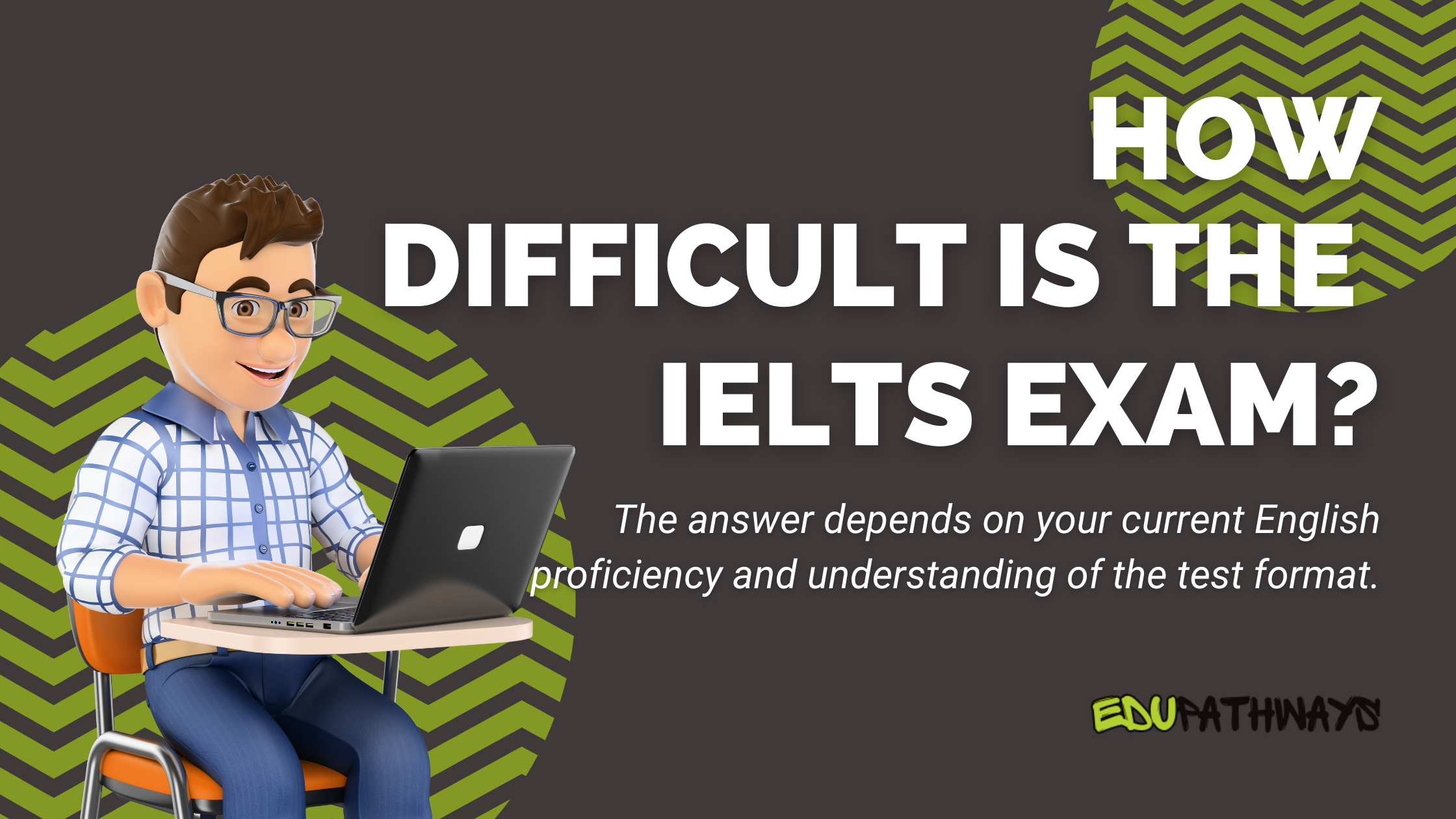The International English Language Testing System (IELTS) is one of the most widely recognized English proficiency exams globally. So, how difficult is the IELTS exam? Understanding the difficulty level of the test is very important if you are looking to take it for academic purposes, professional certifications, or immigration, to ensure effective preparation. In this post, we will provide a balanced assessment of the IELTS exam, explore its challenges, and share practical strategies to help you succeed.
Understanding the Format of the IELTS
Before diving into the difficulty level of the IELTS exam, it is essential to understand the structure of the exam. The exam is split into four sections:
- Listening (30 minutes): Comprehension of spoken English through various audio clips.
- Reading (60 minutes): Analysis and interpretation of written texts.
- Writing (60 minutes): Two tasks that assess your ability to articulate ideas in written form.
- Speaking (11–14 minutes): A face-to-face interview to test verbal communication skills.
Each section is scored on a band scale of 0–9, with most institutions requiring scores between 6.0 and 7.5.
Why the IELTS May Be Difficult
1. Limited Time
Time management is one of the most challenging aspects of the IELTS. Each section of the test has strict time limits, leaving little room for hesitation or reasoning. For instance, the reading section requires candidates to answer 40 questions across three lengthy passages in just 60 minutes.
Solution: Improve your reading speed and accuracy by practicing under timed conditions. Learn and understand scanning and skimming techniques of studying to quickly locate key information, and get very good at it.
2. Advanced Vocabulary and Complex Language
The IELTS often includes a wide range of vocabulary, most especially in the Reading and Writing sections. Academic texts in the Reading section may contain complex terms and expressions, while the Writing section requires broad vocabulary usage to articulate ideas clearly and develop standard essay.
Solution: Build and improve your vocabulary by reading newspapers, academic journals, and novels, listening to podcasts, and using a dictionary to look up words and find meanings or synonyms. Keep a vocabulary notebook and learn to use new words in context.
3. Listening Challenges
The Listening section can sometimes be tricky due to varying accents (British, American, Australian, etc.) and the need to apprehend specific details while listening to recordings only once.
Solution: Practice with audio materials that cover different English accents in them. Listening to podcasts, audiobooks, and news channels can help you adapt.
4. Complex Nature of Writing Tasks
The Writing section requires both analytical skills (for interpreting data in Task 1) and coherent argumentation (for the essay in Task 2). Achieving a high band score requires clarity, organization, and the use of appropriate tone and language.
Solution: Review sample essays to understand what makes up a high-scoring response. Simulate writing in the IELTS exam conditions and seek feedback from instructors or peers.
5. Nervousness While Speaking
The Speaking section can feel intimidating because it usually involves a one-on-one interview with an examiner. Nervousness can impede fluency and confidence.
Solution: Engage in regular conversations in English to build confidence and fluency. Practice common IELTS topics with a friend or tutor and record yourself to evaluate your fluency and pronunciation to build confidence.
Why the IELTS Is a Good Choice for You
1. Consistent Format
The IELTS exam has a consistent format, which makes it easier for candidates to prepare orderly. A clear understanding of the test’s structure can significantly reduce anxiety and boost confidence.
Tip: Use official IELTS practice materials to understand the types of questions and tasks you’ll encounter.
2. No “Pass” or “Fail”
Unlike other exams, the IELTS exam doesn’t have a pass/fail system. Instead, scores are awarded as bands. This means candidates can focus on achieving their target score without the pressure of outright failure.
Tip: Know the score required for your specific purpose (e.g., university admission, visa application) and tailor your preparation appropriately.
3. Accessible Preparation Resources
IELTS has abundant resources to help candidates prepare for the tests, from official guides to online practice tests. Most candidates also benefit from coaching centers and language tutors.
Tip: Use free online platforms like IELTS.org, to access practice tests and tips directly from the exam creators.
Scoring and Standards
The IELTS scoring system is designed to reflect practical English proficiency. A band score of 7.0, for instance, indicates that the candidate is a “good user” of the language, capable of handling complex tasks. While the standard is high, it is achievable with dedicated practice and preparation.
Also read: How the IELTS score is calculated
Final Thoughts
So, how difficult is the IELTS exam? The answer depends on your current English proficiency and understanding of the test format. While the exam presents challenges such as time constraints, use of advanced vocabulary, and speaking anxiety, these can be overcome with consistent preparation and practice.
Remember, the IELTS is not just a test of your English skills but also your ability to perform under pressure. By understanding the format, practicing strategically, and building confidence, you can approach the exam with a clear mind and a strong plan.
Good luck on your IELTS journey! You’ve got this!



